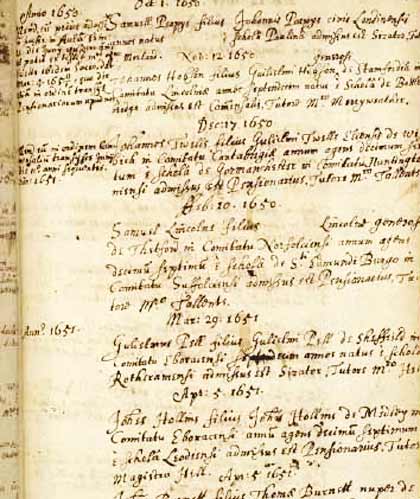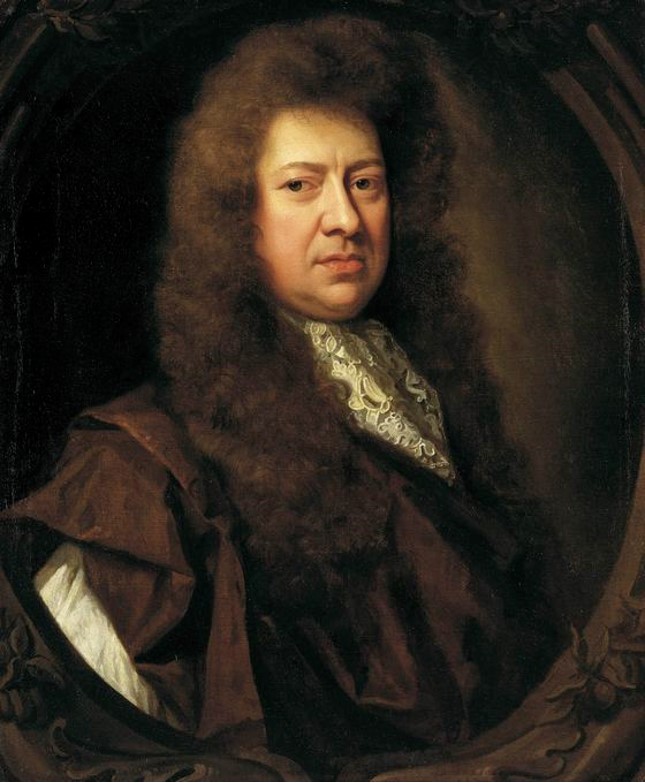By Anastasia Miskaki,
When one thinks of autobiographies, names like Anne Frank, or even those of famous political figures, such as Michelle Obama, spring to mind. We often think of self-writing in terms of teenagers jotting down their everyday happenings and feelings on the pages of diaries they might one day read again as adults. However, writing regarding ourselves goes beyond this. From Saint Augustine to Benjamin Franklin and Nelson Mandela, history abounds in examples of people that put pen unto paper to record their, at times, extremely interesting lives. One such example is Samuel Pepys.
Pepys was born on February 23 in 1633 near Fleet Street in London. He was the son of a tailor and Margaret Kite, the sister of a butcher. Although the man had a very humble beginning, he ended up leading a very successful life. Young Pepys was sent to St. Paul’s School, London, after having attended school in Huntingdon. In 1650, he was entered at Trinity Hall, Cambridge, but instead chose to go as a sizar to Magdalene College and 3 years later, he took his B.A. degree. and in 1660 that of M.A. Not much is known of his university career except for the fact that he was once reprimanded for being “scandalously overserved with a drink.” In fact, 1660 seems to have been a monumental year for Pepys. He was made clerk of the acts to the Navy Board in the Royal Navy Dockyards, a quite important post in the English government. From this position, he rose upwards in the intricate world of public service. In the following years, he became a Justice of the Peace, a Commissioner for and, later, Treasurer of, Tangier, and Surveyor of naval victualling. In 1673, he was appointed Secretary to the Admiralty and a Member of Parliament for a Norfolk and later Harwich. He helped bring into existence a professional naval service in England so it comes as no surprise that during the reign of King James II, Pepys was one of the most successful men in England. However, he was not widely admired. In 1679, Pepys was accused of selling naval secrets to France. He was, subsequently, forced to resign although the charges were dropped later. In 1690, he was arrested once more, this time under suspicion of being a Jacobite, but, eventually, he was released.

If his professional life seems interesting, then his personal life is rather fascinating. In December 1655, at 22 years of age, Pepys married Elizabeth Marchant de Saint-Michel, the 15-year-old daughter of a French Huguenot refugee. In his diary, among other things, he describes his quarrels with his wife in a frank manner, as well as his many extramarital affairs with his servants and with the wives, daughters, and even the mothers of his colleagues. Pepys listed in his diary numerous mistresses, including Mrs. Lane, Mrs. Tooker, Mrs. Burrows, Mrs. Martin, Mrs. Pennington, Betty Mitchell, and the actress Elizabeth Knepp. One of his most passionate and well-known affairs was with Deb Willet, a lady’s maid to his wife. His longest affair was with Mrs. Bess Bagwell, whose husband took advantage of her illicit relationship with Pepys to advance himself in the Navy. At the same time, Pepys was plagued by illness. From a young age, he suffered from bladder stones in his urinary tract — a condition from which his mother and brother John also later suffered. He was always in pain, and had other symptoms, including “blood in the urine” (hematuria). By the time of his marriage, the condition had worsened. On March 26, 1658, he underwent a serious abdominal operation to be saved from this condition, an occasion of which the anniversary he always celebrated with a big dinner — “This being my solemn feast for my cutting of the stone.” However, the incision on his bladder broke open again when he got older. This operation may also be the reason Pepys never had any children despite his marriage and numerous affairs, as the procedure may have left him sterile. Another health problem he faced during his lifetime was his degenerated eyesight, which also prompted him to give up his diary writing. Nevertheless, he never actually went blind.
Pepys kept his diary from 1660 to 1669, which means he was only 27 years old when he started writing and 36 when he gave it up. It is written in shorthand, with most names in longhand. It includes his private thoughts, such as those about his affairs, or even extensive commentary on life and events in 17th-century England, for example, the plague of 1665, the Great Fire of London, and Charles II’s coronation. Altogether, he wrote about 1.3 million words, filling six quarto volumes in the Pepys Library. When the diary was first deciphered and published in the 19th century, it made him newly famous. One of the most remarkable entries refers to one of his mistresses.
Pepys very often mixed different languages, creating a linguistic code of his own, especially when writing about his sexual adventures, as in the passage below. What is interesting here, however, is the way he behaves to Deb, the mistress in question, as he sexually assaults her and forbids her to see other men in the fear of God.

Pepys certainly led an intriguing life. For example, on his birthday in 1669, he took his wife and servants to Westminster Abbey to show them the open coffin of Catherine de Valois (Queen to Henry V) and was able to view the mummified remains and kissed her: “I did kiss her mouth, reflecting upon it that I did kiss a Queen and that this was my birthday, 36 years old, that I did the first kiss a Queen.” During the Great Fire of London, in 1666, scared that he would lose his belongings amidst the flames, Pepys stormed out of his house and dug a hole in the ground. There, he hid his precious items, such as his personal documents and his gold, but also a considerable amount of Parmesan cheese.
After his retirement in 1689, Pepys kept his residence in York Buildings, near the place where Hungerford Bridge is located today in London. There he started gathering materials to write a history of the Navy, but his plans never materialized. His health gradually failed and in 1701, he moved himself and his belongings to Clapham. After a painful struggle that lasted two days, he died at exactly 47 minutes past 3 o’clock in the morning by his own gold watch. He was 70 years old.
From merely being the son of a struggling London tailor, he was very successful thanks to a combination of smartness, will, networking and charisma. Although in a 1660 diary entry he reproaches himself for being a slave to pleasure to the point it meddled with his business, he concludes: “[M]usic and women I cannot but give way to, whatever my business is.” Samuel Pepys’s grave is situated in the church of St. Olave in London, and his legacy remains alive forever through his diary.
References
- BBC, Samuel Pepys (1633-1703), Available here
- Bryant, A., Samuel Pepys, Britannica, Available here
- Cavendish, R., Death of Samuel Pepys, History Today, Available here
- History Extra, 7 Things You (Probably) Didn’t Know About Samuel Pepys, Available here
- Pepys Diary, The Diary of Samuel Pepys, Available here




